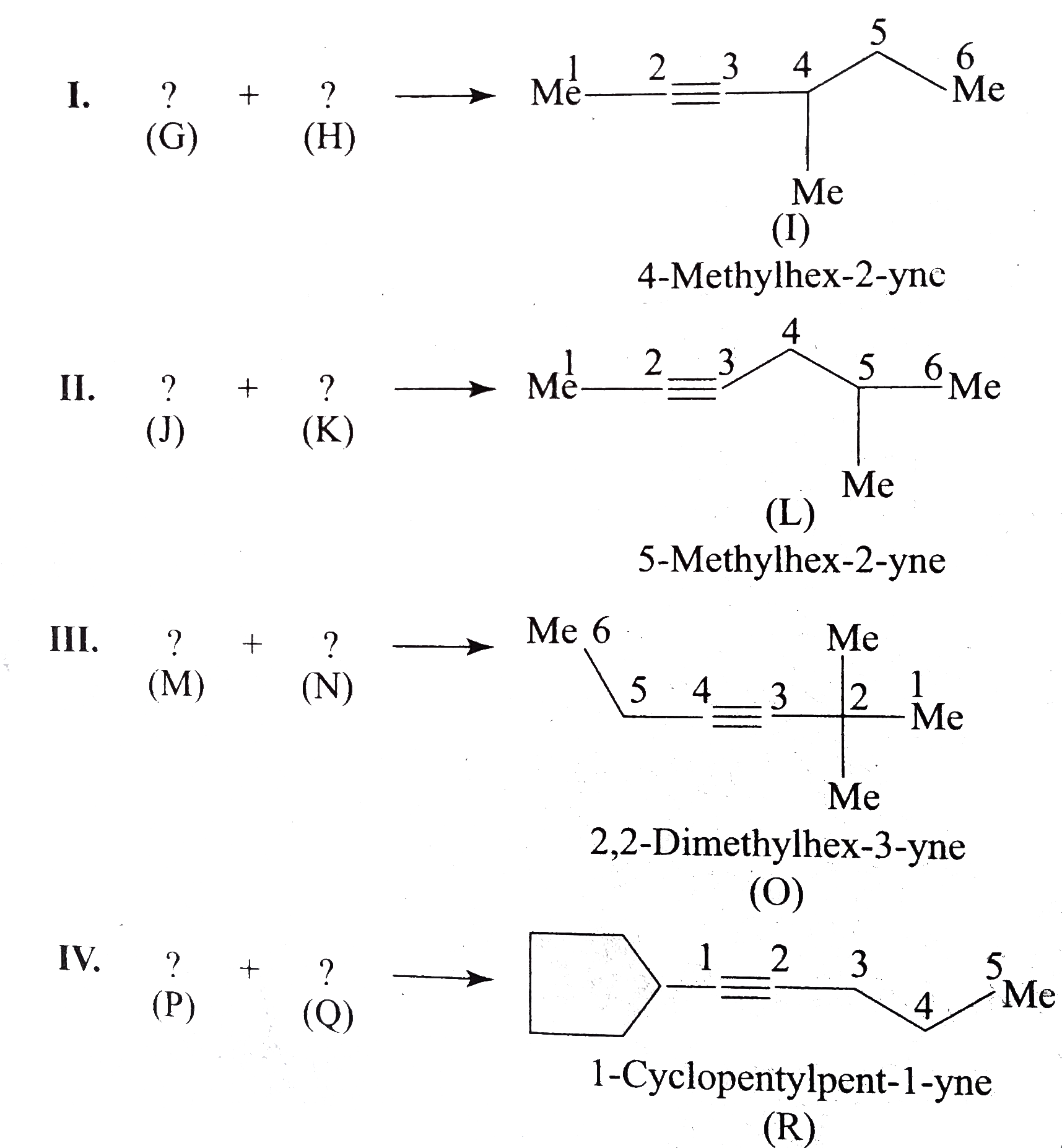Complete the following reaction and write the structure of the product formed.
B2H6Excess NH_(3))−−−−−−−−→High temp.
The correct Answer is:A, B, C, D
To complete the reaction of diborane (B₂H₆) with excess ammonia (NH₃) at high temperature, we will follow these steps:
Step 1: Identify the Reactants
The reactants in this reaction are diborane (B₂H₆) and ammonia (NH₃).
Step 2: Understand the Reaction Conditions
The reaction is carried out at high temperature and with excess ammonia. This indicates that the reaction will likely lead to the formation of a stable compound.
Step 3: Determine the Product
When diborane reacts with ammonia under these conditions, it forms a compound known as borazole (B₃N₃H₆), which can also be referred to as borazine.
Step 4: Write the Chemical Equation
The balanced chemical equation for the reaction can be written as:
\(
B_2H_6 + 3NH_3 \rightarrow B_3N_3H_6 + 3H_2
\)
Step 5: Draw the Structure of Borazole
Borazole (B₃N₃H₆) has a cyclic structure similar to benzene, with alternating boron and nitrogen atoms. The structure can be represented as follows:
1. Start with a six-membered ring.
2. Alternate boron (B) and nitrogen (N) atoms around the ring.
3. Each boron atom is bonded to one hydrogen atom.
4. The nitrogen atoms are also bonded to one hydrogen atom each.
5. The bonds between boron and nitrogen are single bonds, while the bonds between alternating atoms are double bonds.
The structure can be drawn as:
HH B=NNB B=NHH
Final Product
The final product of the reaction is borazole (B₃N₃H₆), which has a structure resembling that of benzene but consists of alternating boron and nitrogen atoms.
---
The reactants in this reaction are diborane (B₂H₆) and ammonia (NH₃).
The reaction is carried out at high temperature and with excess ammonia. This indicates that the reaction will likely lead to the formation of a stable compound.
When diborane reacts with ammonia under these conditions, it forms a compound known as borazole (B₃N₃H₆), which can also be referred to as borazine.
The balanced chemical equation for the reaction can be written as:
\(
B_2H_6 + 3NH_3 \rightarrow B_3N_3H_6 + 3H_2
\)
Borazole (B₃N₃H₆) has a cyclic structure similar to benzene, with alternating boron and nitrogen atoms. The structure can be represented as follows:
2. Alternate boron (B) and nitrogen (N) atoms around the ring.
3. Each boron atom is bonded to one hydrogen atom.
4. The nitrogen atoms are also bonded to one hydrogen atom each.
5. The bonds between boron and nitrogen are single bonds, while the bonds between alternating atoms are double bonds.
HH B=NNB B=NHH
The final product of the reaction is borazole (B₃N₃H₆), which has a structure resembling that of benzene but consists of alternating boron and nitrogen atoms.
Topper's Solved these Questions
- P-BLOCK ELEMENT (BORON AND CARBON FAMILY)BOOK - RESONANCE ENGLISHCHAPTER - P-BLOCK ELEMENT (BORON AND CARBON FAMILY)EXERCISE - Exercise-1 Part-I : SUBJECTIVE QUESTIONS Section (F) : Oxides, Oxyacids & Hydroxides ; Borax
4 Videos
- P-BLOCK ELEMENT (BORON AND CARBON FAMILY)BOOK - RESONANCE ENGLISHCHAPTER - P-BLOCK ELEMENT (BORON AND CARBON FAMILY)EXERCISE - Exercise-1 Part-I : SUBJECTIVE QUESTIONS Section (G) : Halides, Alums & Other metal salts
4 Videos
- P-BLOCK ELEMENT (BORON AND CARBON FAMILY)BOOK - RESONANCE ENGLISHCHAPTER - P-BLOCK ELEMENT (BORON AND CARBON FAMILY)EXERCISE - Exercise-1 Part-I : SUBJECTIVE QUESTIONS Section (D) : Chemical properties of elements (AI,SN,PB)
4 Videos
- P BLOCK ELEMENTSBOOK - RESONANCE ENGLISHCHAPTER - P BLOCK ELEMENTSEXERCISE - PART -II
23 Videos
- P-BLOCK ELEMENTS (HALOGEN & NOBLE GASES)BOOK - RESONANCE ENGLISHCHAPTER - P-BLOCK ELEMENTS (HALOGEN & NOBLE GASES)EXERCISE - APSP PART-3
22 Videos
Similar Questions
Complete the following reactionas and identify the products formed.
(i)BCl3+NH4Cl140∘C−−−−→C6H5Cl(A)NaBH4−−−−→(B)
(b)BCl3+H2+Cfibre1700−1800∘C−−−−−−−−→product(s)
View SolutionWrite the structure of the product A & B
C2H5−C∣∣O−O18C2H5H3O⊕−−−→A+B
View SolutionComplete the following reactions and name the products:
C2H5NH2NaNO2.HCl−−−−−−−→
View SolutionThe following reaction gives two products. Write the structures of these products.
CH3CONHC6H5Br2/Fe−−−−→.
View SolutionComplete the following reaction and identify compounds (A) and (B).
B(OH)3NH4HF2−−−−−→Fusion(A)B2O3−−→Δ(B)
View SolutionComplete the following reactions with appropriate structures of product/reagents :
C6H5CH=CH2Br2−−→[A](i)NaNH2(3equivalent)−−−−−−−−−−−−−−−→(ii)CH3I[B]
View SolutionWrite the structure of B2H6 and its reaction with HCl(excess).
View SolutionFollowing reaction gives two products . Write the structures of the products .
CH3CH2NH2(CH3CO)2O,heat−−−−−−−−−−−→A + B
View SolutionComplete the following sequence of reactions with appropriate structures.
CH3−CH2−COOHPand−−−−→Bromide(A)
(A)(i)Alc.KOH(excess)−−−−−−−−−−−−−→(ii)H⊕(B).
View SolutionComplete the following reactions:
a. Prop−1−yneNaNH2−−−−→liq.NH2(B)

View Solution
